Last updated on February 28, 2024
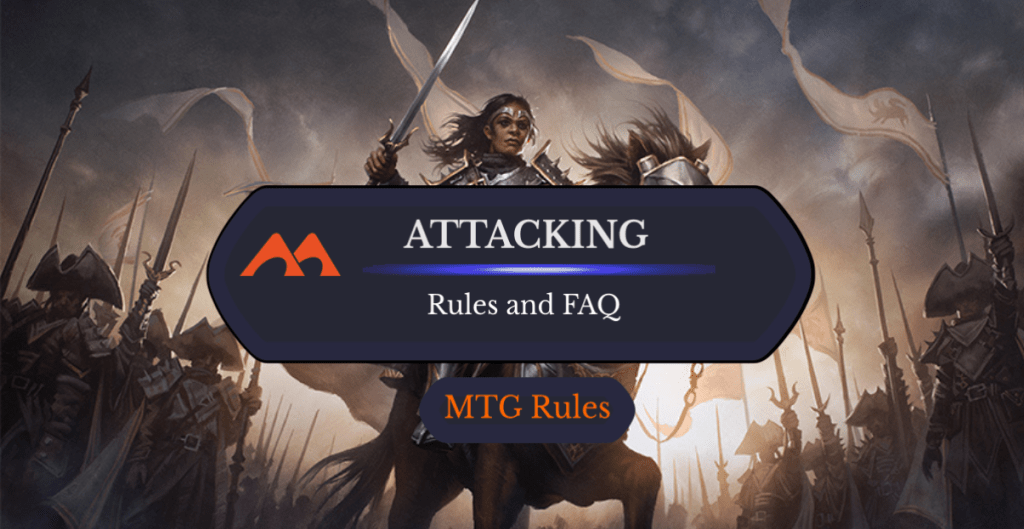
Adeline, Resplendent Cathar | Illustration by Bryan Sola
Tussles tend to be untidy topics, and Magic is no exception.
Even if the whole game works under very precise rules, there's so much going on during the combat phase that deciphering how attacking works can be one of the messiest matters in the game.
But despair not: Unlike real life, Magic melees are a strictly structured subject. So let's press the offense and find out how the best defense works!
What Is Attacking?
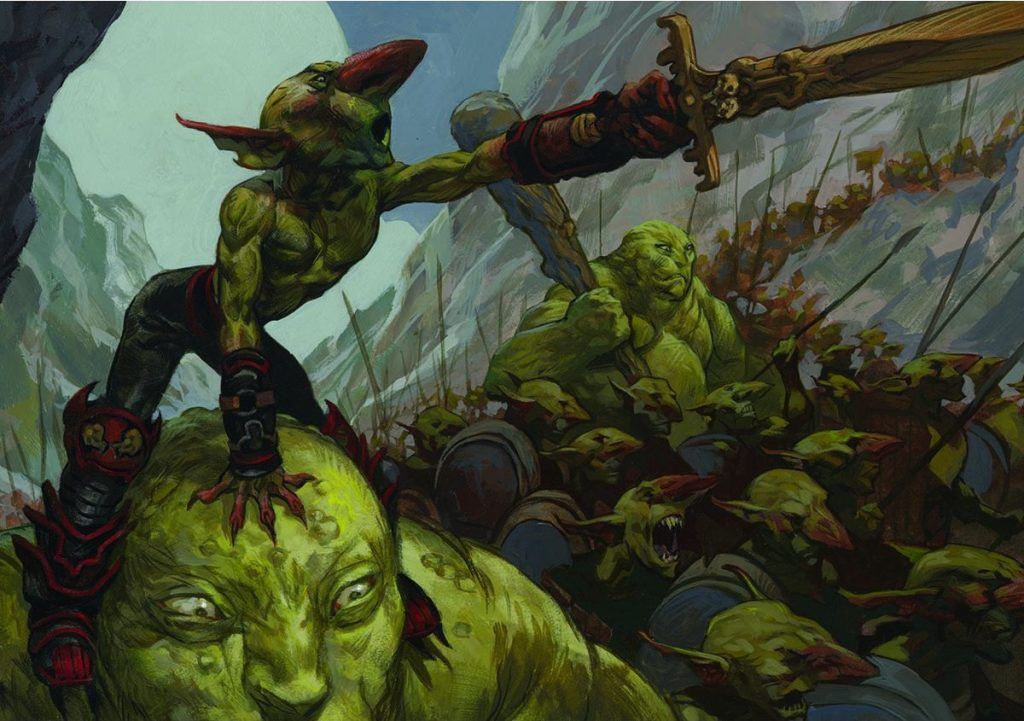
Relentless Assault | Illustration by Christopher Moeller
In Magic, a creature is attacking if it's declared as an attacker during the “declare attackers step” (the second step of the combat phase), or if some effect puts it onto the battlefield attacking, like when Adeline, Resplendent Cathar puts an attacking 1/1 human creature token into play.
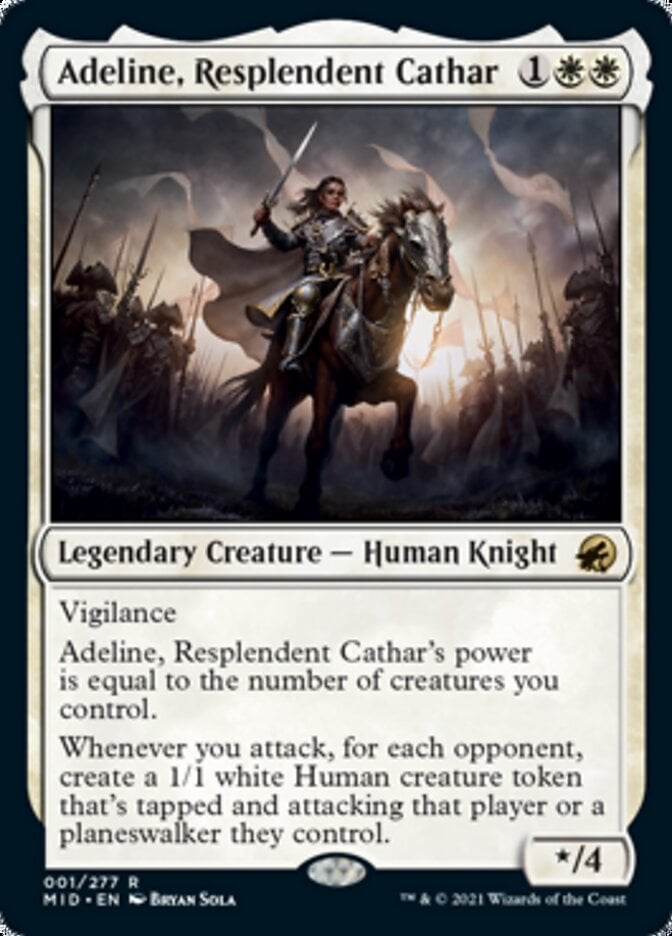
Only creatures can attack, and they can have only three types of objectives: opponents, planeswalkers they control, or battles they defend.
Unless it has vigilance, the attacking player taps a creature to declare it as an attacker. Creatures with summoning sickness can’t attack the turn they entered the battlefield unless they gave haste.
As a refresher, a turn in MTG has five phases: beginning, precombat main, combat, postcombat main, and ending phase. The combat phase is further divided into five steps:
- Beginning of Combat
- Declare Attackers
- Declare Blockers
- Combat Damage
- End of Combat
Creatures are no longer considered attacking or blocking once the combat phase ends. Some effects, like Moraug, Fury of Akoum or Relentless Assault, refer to creatures that have attacked; but if the combat phase is over, they are no longer attacking.
If there's another combat phase, like with Relentless Assault, creatures may once again become attackers.
How Does Attacking Work?
Combat starts with the “beginning of combat” step, where some triggered abilities will trigger and priority passes between players before attackers are declared. This is the last opportunity for an opponent to interact before the active player attacks. Multiplayer formats may have their own rules on the matter so we won't cover them here.
At the start of the “declare attackers” step, the attacking player declares which of their creatures will attack, and what/who they’re attacking (a player, planeswalker, or battle). Each attacking creature can attack a single objective, but different attackers can aim for different objectives.
The attacking player taps each creature that's declared as an attacker unless it has vigilance.
By the way: Expressions that mention “you” as an attacker, like Adeline, Resplendent Cathar, mean “when at least one of your creatures is declared as an attacker” – you don't have to, you know, verbally assault or personally punch anybody, or anything like that!
When Can You Unassign Attackers?
Once you declare attackers, that's it – they’re attacking. No going back. There is no “unassigning attackers,” though some effects might remove a creature from combat, in which case it’s no longer attacking.
And no changing objectives, either! If you declared your 6/6 as attacking a planeswalker, they can't attack anything else in the samecombat phase unless some effect allows them to.
What’s Assigning Damage? Who Chooses?
In short, it's dealer's choice. Whoever is dealing combat damage gets to choose how to assign said combat damage.
It can get messy with multiple blockers, though, so let's go step by step.
As we saw, the attacking player declares attackers and what they’re attacking during the “declare attackers” step.
After attackers are declared, there’s a priority pass where players can interact before the game proceeds to the “declare blockers” step. That's when the defending player chooses which of their creatures block the incoming attackers. If they assign multiple blockers to a single attacker, it's the attacking player (not the defender) who gets to choose how blockers will stand in a “Please Punch Me!” line, so to speak.
Say you attack me with one creature, and I block your attacker with blockers A, B and C. In that scenario, you can arrange the “Please Punch Me!” line as A>B>C, C>A>B, or however you wish. Dealer's choice: You’re dealing the damage, so you get to choose how my blockers will be lined up. This is called “damage assignment order” in the MTG rules.
You can choose the damage assignment order, but no creature deals combat damage during this “declare blockers” step. That happens at the “combat damage” step, during which you get to decide how much damage your attacking creature deals to each of my blockers.
You do have to follow some rules:
- You must assign all combat damage, which is equal to your attacking creature's power. Your attackers are not allowed to go easy and pull their punches – they must strike with full force.
- You need to assign at least lethal damage to the first defender before you assign any damage to whoever's next in the punch line.
- If you wish, you can assign more than lethal damage to any blocker(s), which is when things get tricky; more on this below.
Let’s say creature A is a 4/4, B is a 1/1, and C is a 2/2. You’re attacking with a 6/6 and you’ve arranged the damage assignment order as A>B>C.. You must assign at least 4 damage to A (which would kill it); if you assign exactly 4 damage, then you must assign at least 1 damage to B (which again would kill it); if you assign exactly 1, then you assign the remaining 1 damage to C.
In other words, you can't just graze A and B, and assign all 6 points of damage to C.” If you want to damage C, you have to either place it first in the assignment order, or deal lethal damage to any blockers assigned before it with damage to spare.
You could also do the opposite and “overkill” one of my blockers. You can choose to assign 6 points of damage to blocker A even if it’s a 4/4, and avoid dealing any damage B and C.
Why would you want to do that, you ask?
More often than not you won't, but there are corner cases. Perhaps I stole creatures B and C from you until end of turn, and you want to spare them. Or maybe if B or C die they’ll trigger some effects that you want to avoid. Or there may be multiplayer politics at play, etc.
What If You Tap an Attacking Creature?
Once a creature is attacking, tapping or untapping it has no effect as far as combat is concerned. The creature is still attacking, and combat damage is unaffected.
The same is true for blockers, by the way.
However, if an effect taps a creature before it attacks (or blocks), then it won’t be able to engage in combat. As a tip: If you have a tap ability and want to prevent a creature from attacking, the “beginning of combat” step is your last chance to do so.
How Is Damage Dealt with Multiple Blockers?
As we saw previously, it's dealer's choice: If you’re the attacker then you get to choose how your attacking creature deals damage to the blockers.
The rules of engagement are:
- Whenever a single attacker gets multiple blockers, it's the attacking player (not the defender!) who gets to arrange blockers in the order they’ll receive damage – this is done during the “declare blockers” step, right after the defending player chooses their blockers.
- The attacking player isn’t allowed to pull their punches during the “combat damage” step – they have to assign all their attackers' combat damage.
- An attacker must assign lethal damage to a blocker before being able to assign damage to the next blocker in the punch line.
- Attackers can overkill a blocker if they want by assigning more damage than would be necessary to kill that blocker and assigning less damage to other blockers – not something you'll want to do often, but it's an option if for some reason you want to focus on a specific blocker while allowing another blocker to survive unscathed.
How Is Damage Assigned With Deathtouch?
You need a single point of deathtouch damage to kill a creature, so just 1 point of damage needs to be assigned to each blocker.
If your 3/3 deathtouch is blocked by a 4/4, a 5/5, and a 6/6, everybody dies: Your 3/3 will do 1 point to each of the three blockers.
Does Deathtouch Work on Planeswalkers?
Nope! Deathtouch only affects creatures and is treated like normal damage as a result of attacking planeswalkers.
How Does Double Strike Work with Trample?
If your creature has trample, all its excess combat damage after all its blockers are dead will connect with the attacker's objective (player, planeswalker, or battle). If the attacking trampler also has double strike, this works on both of the damage-dealing steps.
Let's say your 6/6 with double strike attacks a player and gets blocked by a 4/4. During the first strike combat damage step, your 6/6 deals 4 damage to the blocker, kills it, and then deals the excess 2 points of damage to the player. In the second/normal combat damage step, since there's no blocker left standing, your attacker deals the full 6 points of damage to the defending player.
By the way: If your double-striking trampler also has deathtouch, it’ll only need 1 point of damage to kill each blocker and will deal any excess to the defending player.
Do Vehicles Tap After Attacking?

Indeed! A vehicle turns into a creature when crewed, and therefore behaves exactly like a creature… because it is a creature at that point!
Therefore, it taps if it attacks (unless it has vigilance, like Parhelion II).
Notice that artifacts that turn into a creature will have summoning sickness during their first turn under your control.
Can You Cast Instants After Attackers Are Declared?
Yep! Right after the attacking player declares attackers, they receive priority and they can cast instants. Once they pass, other players can do the same.
Once everybody passes with an empty stack, the game proceeds to the “declare blockers” step, which works similarly (the active player gets priority right after blockers are declared).
Attacking vs. Fighting
While combat damage and fighting have several points in common, they’re different effects and don't entirely overlap.
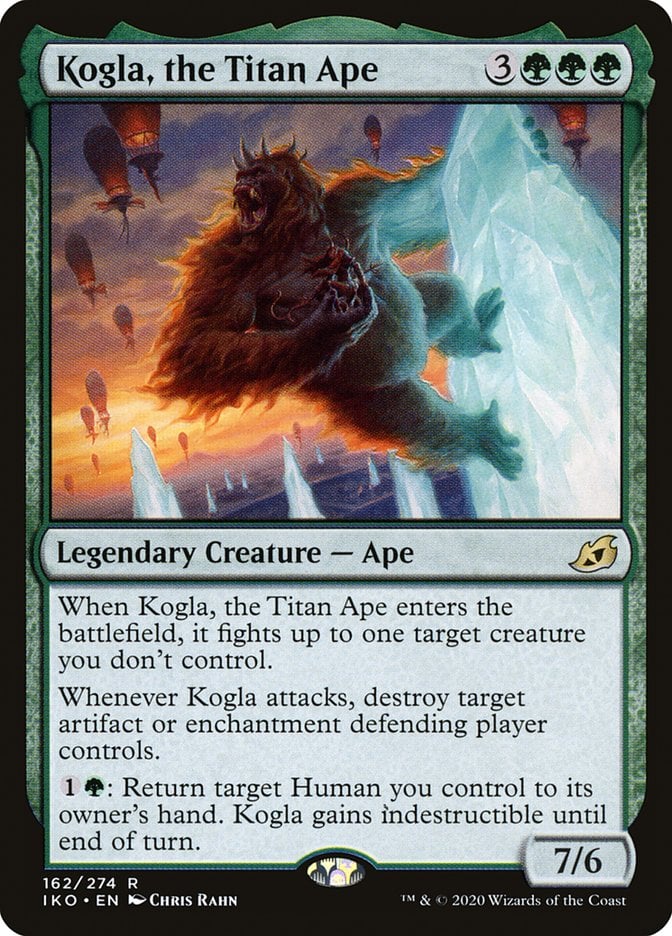
When an effect instructs two creatures to fight (like when Kogla, the Titan Ape ETBs), each of those creatures deals damage equal to its power to the other creature. In that aspect, fighting is like combat damage.
Deathtouch also works the same way and a single point of damage is lethal: An Infectious Bite from Baleful Strix can kill any creature.
But damage dealt when creatures fight is considered non-combat damage. In particular, first strike and double strike don't work while fighting; they only modify how combat damage is handled. Similarly, trample creatures won't harm the other player even if they deal excess damage in a fight.
Attacking vs. Biting
Effects like Rabid Bite or Bite Down are a different kettle of fish. Unlike fighting or combat damage, bite-like effects are one-sided, and the target doesn’t strike back. This is also considered non-combat damage.
Wrap Up
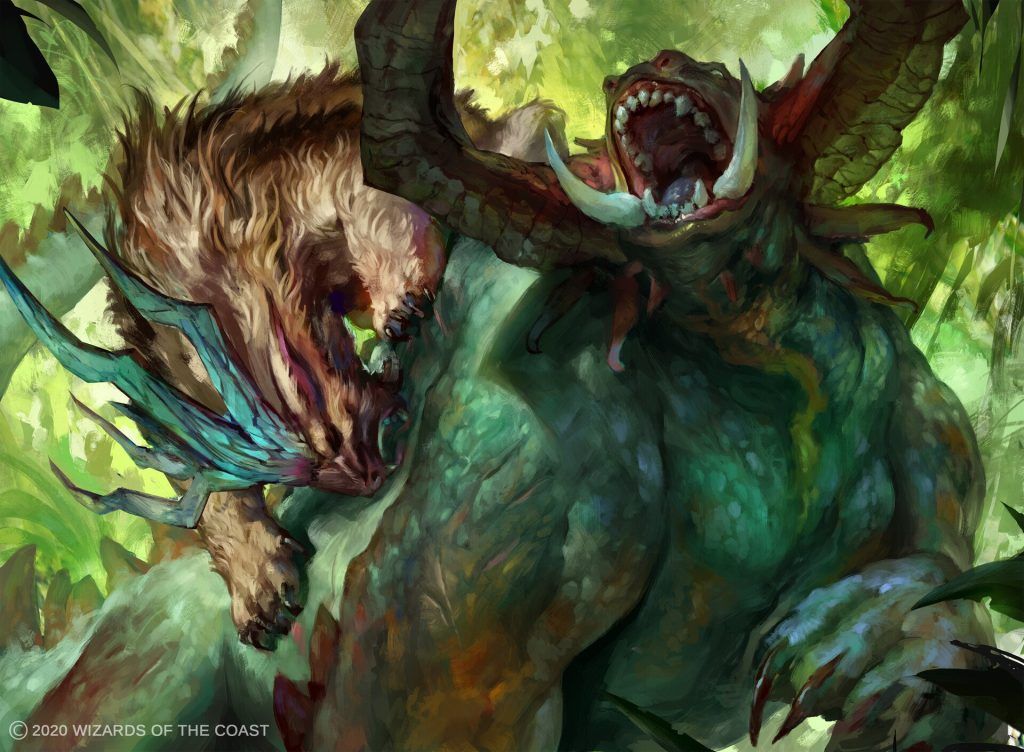
Rabid Bite | Illustration by John Thacker
Alright, time to break up this tussle!
Combat is perhaps the most complex phase in a turn, with lots of things going on during each step. You may want to read about the other steps in detail, since each one has its own quirks, but I hope I’ve clarified how attacking works.
If you have further comments or questions please drop a comment below, stop by the Draftsim Discord for a chat, or ping me on the social network formerly known as Twitter.
And good luck out there!
Follow Draftsim for awesome articles and set updates: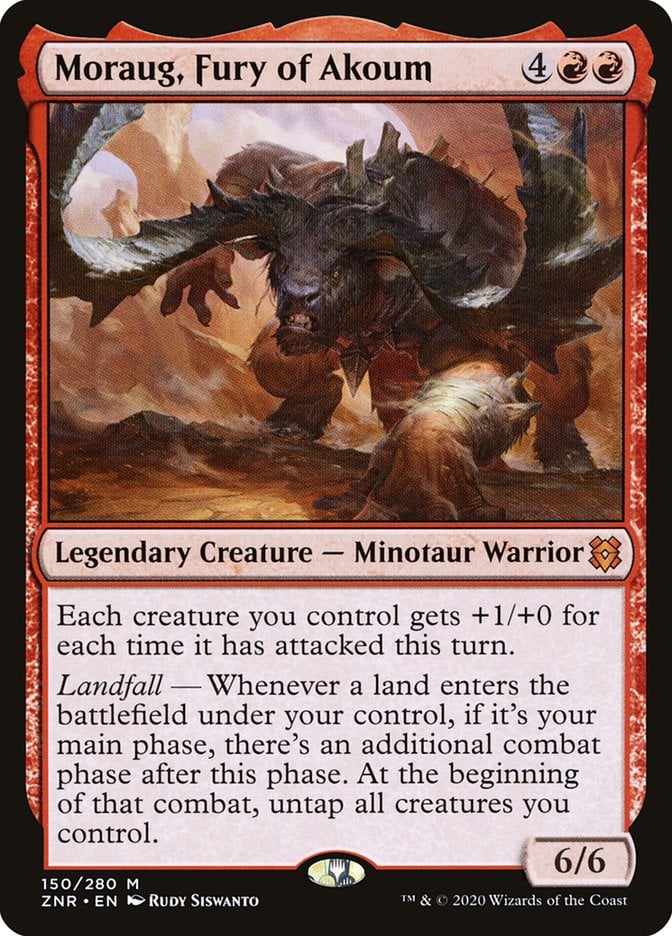
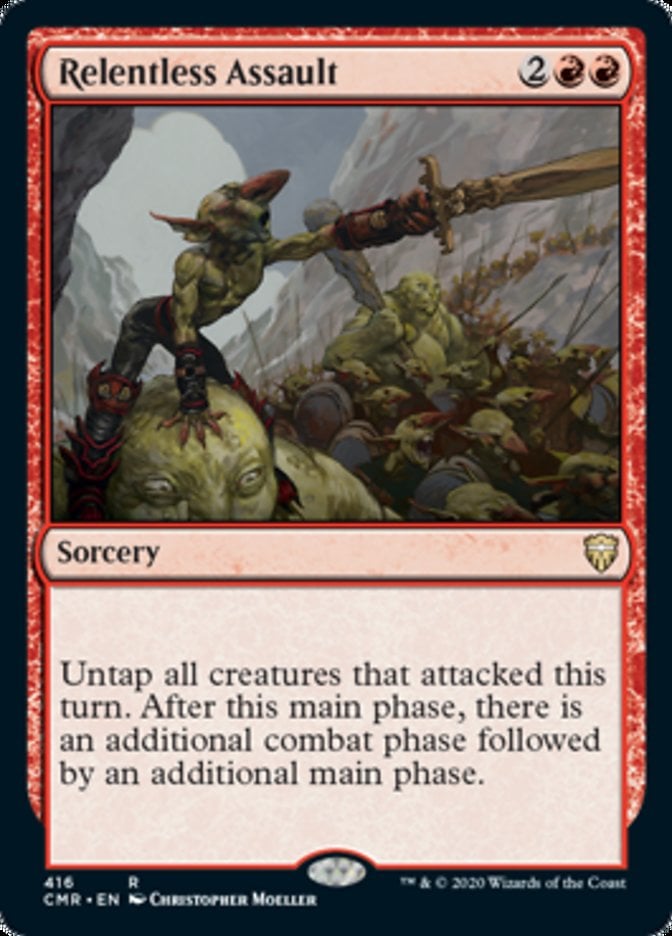
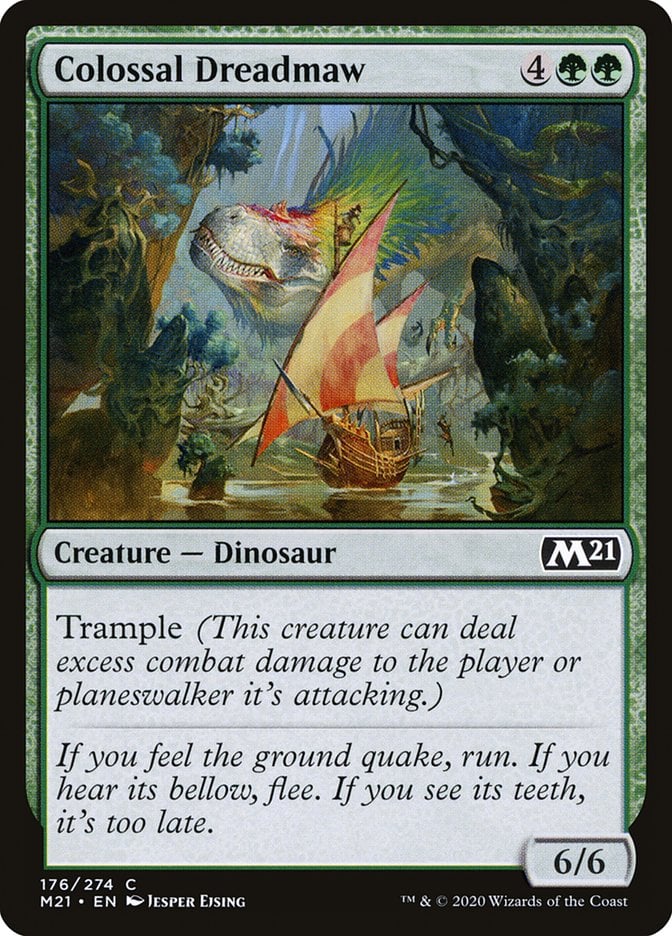
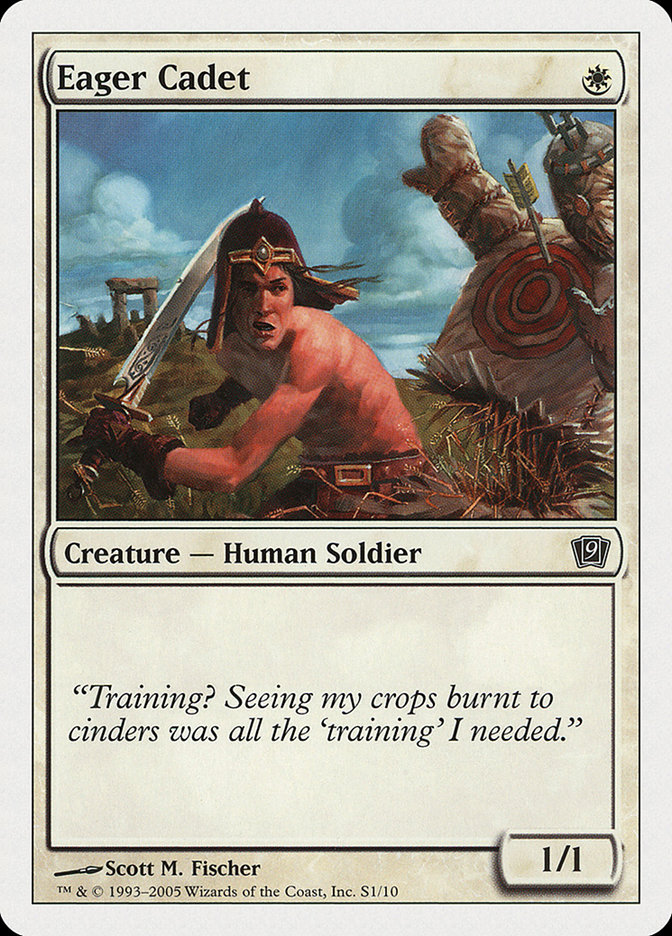
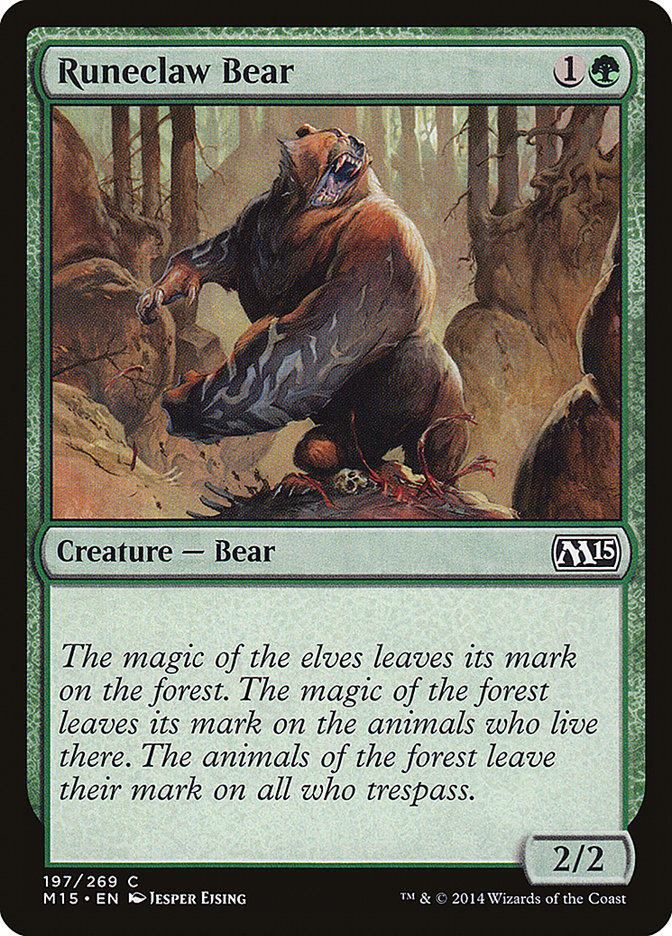
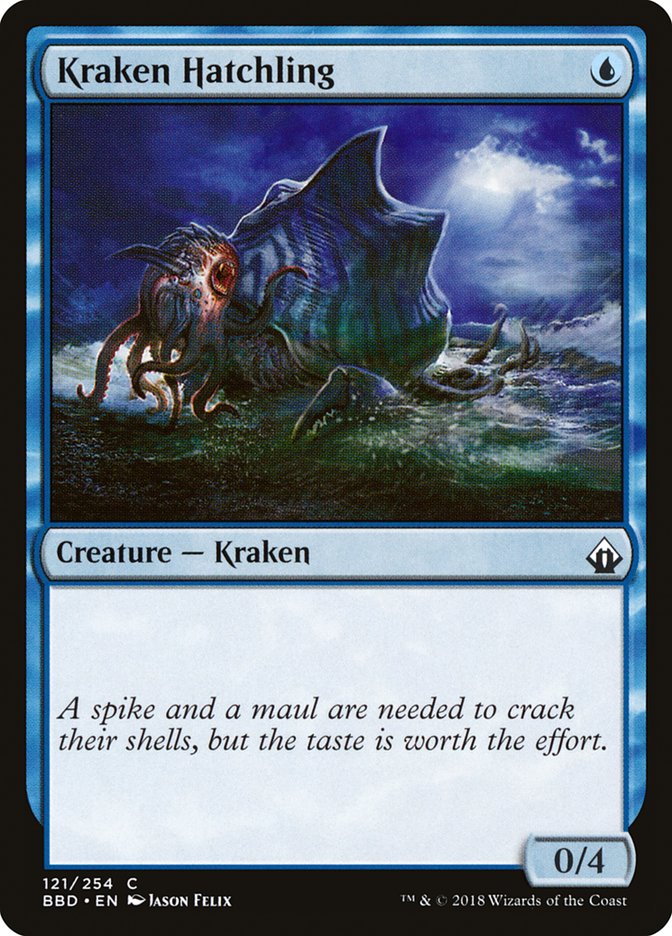
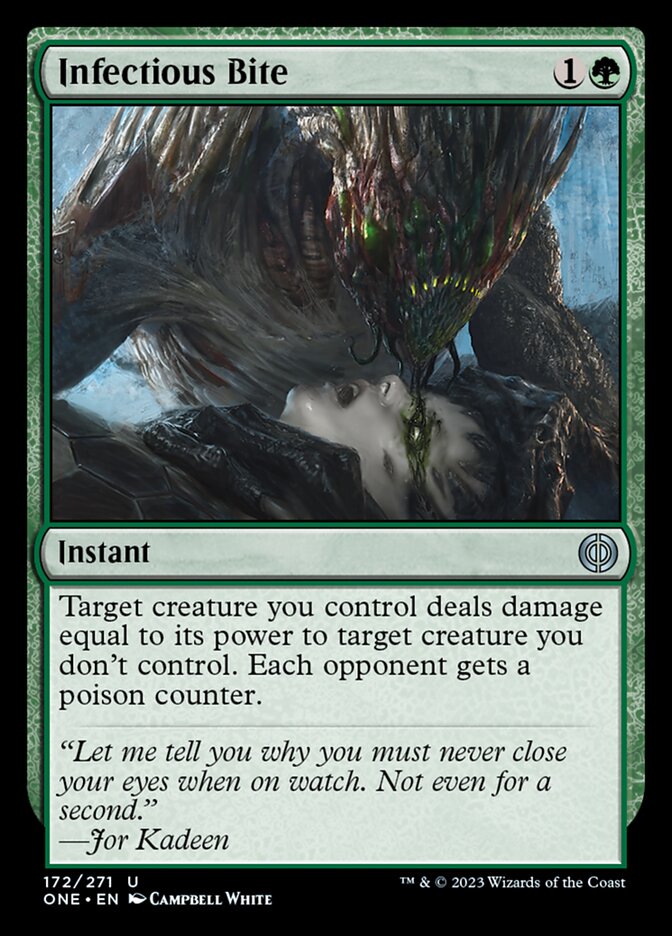
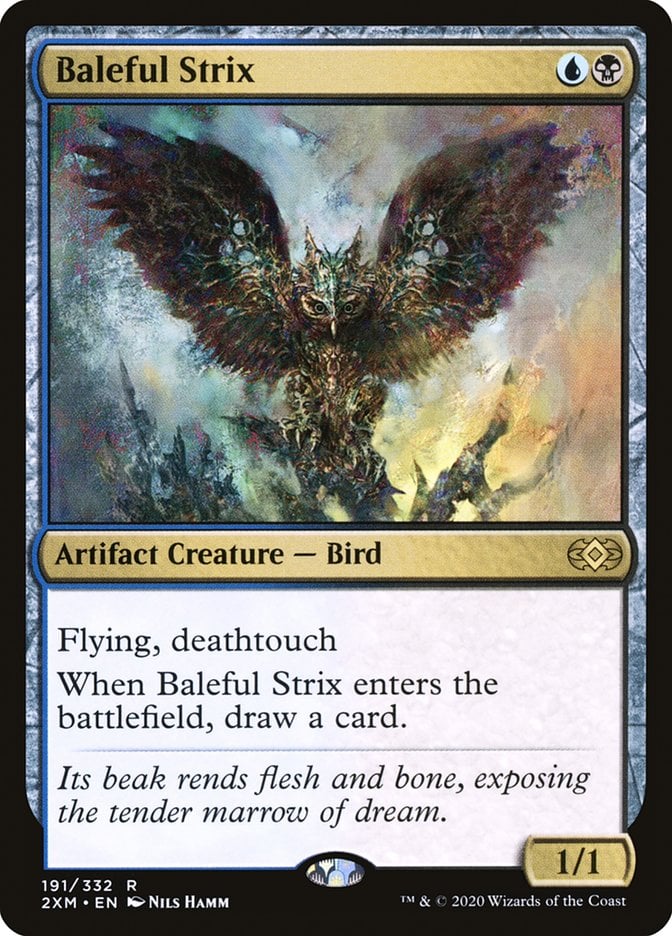
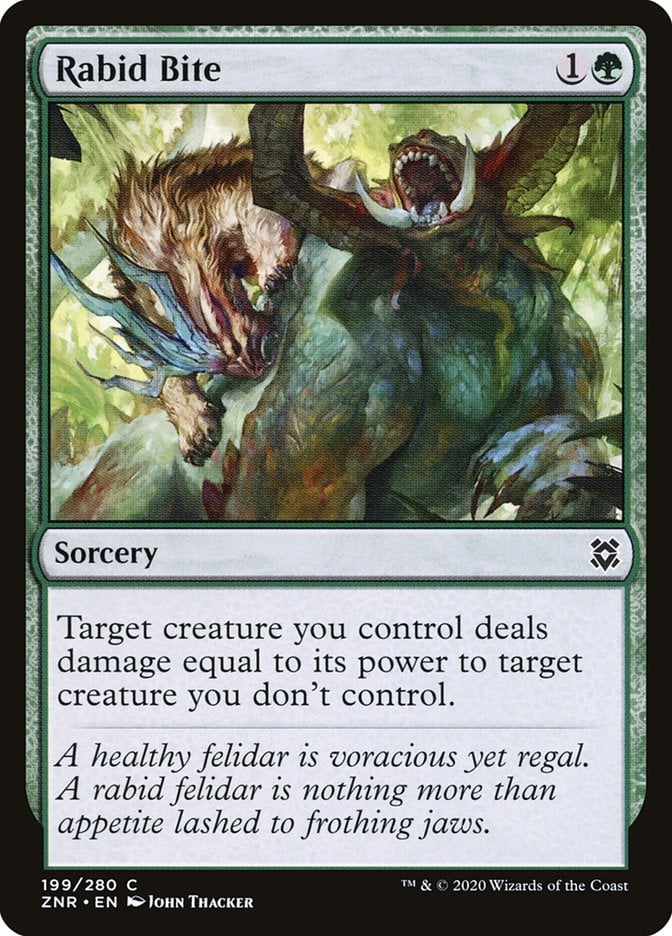
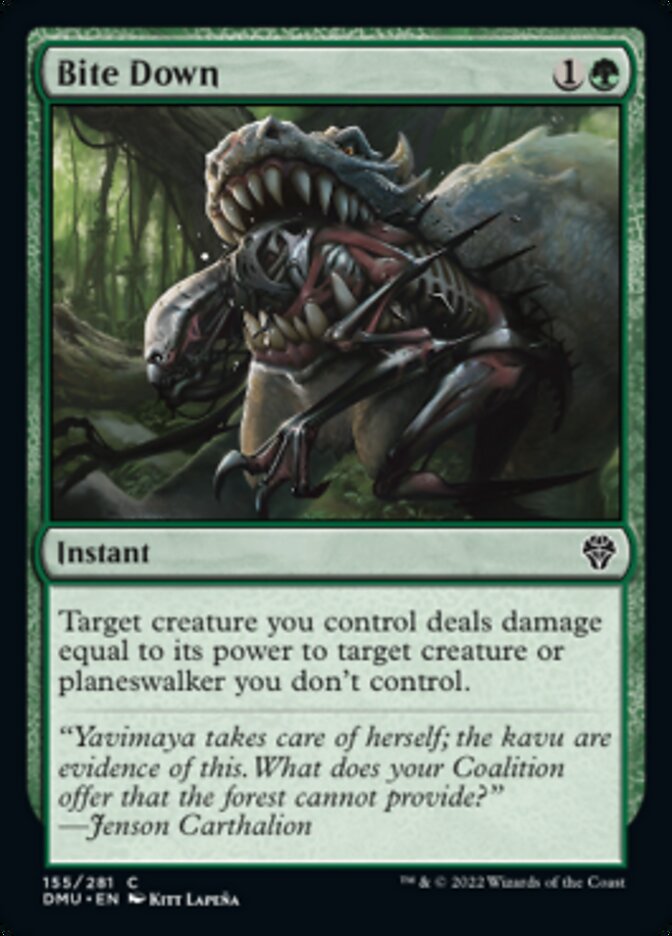
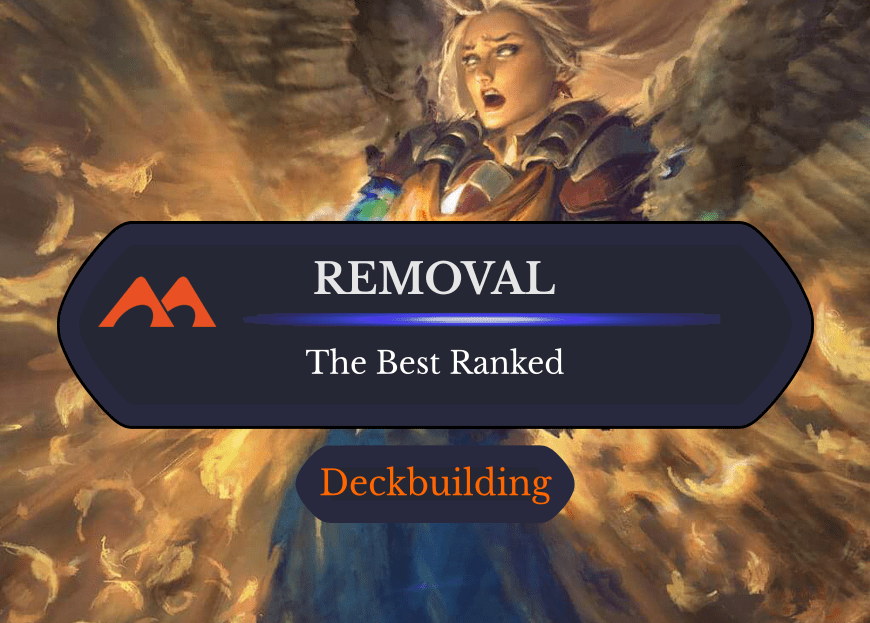
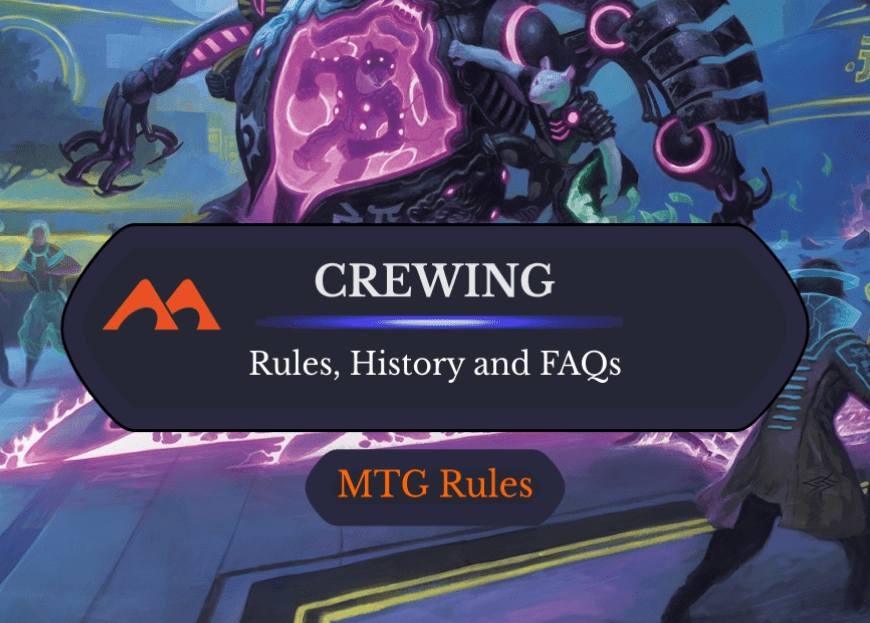
2 Comments
what if Intangible Virtue is in play, which gives the tokens vigilance, but Adeline clearly states that they should be tapped and attacking, do the tokens remain tapped?
Vigilance means the creature doesn’t tap as part of declaring an attack. Tokens made by Adeline and similar cards are never declared as attackers, they just enter attacking, so they’ll be tapped when they enter. They’ll technically have vigilance, but that won’t matter until the next turn when you can actually choose them as attackers.
Add Comment